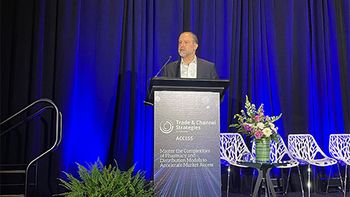
- Pharmaceutical Commerce - September/October 2016
Moving From Big Pharma To A Small Company? You May Be In For A Few Surprises
Sponsored by TGaS Advisors
A significant number of executives at small and pre-commercial biopharmaceutical companies come from large and mid-tier pharma. It makes good sense. Executives looking for new opportunities are more than welcome at small companies. Both sides may have a few surprises in store.
Although big pharma veterans expect gaps in knowledge and experience on the company side, many are not prepared for what they find. Conversely, small companies welcome the experienced hands but don’t always understand the different skill sets required.
The focus of most small companies is, of necessity, launch planning. TGaS Advisors, a benchmarking and advisory services firm for Commercial Operations, realized that some aspects of large pharma big thinking and planning could be useful, but that small companies’ strategic, financial, planning, talent and timing needs are sometimes radically different. So we did what TGaS does best. We conducted a Landscape Survey to find out “What good looks like” in small and emerging biopharma and what executives need to do to achieve that. TGaS conducted in-depth interviews with 15 senior executives at 14 small and pre-commercial companies. These respondents have 168 product launches to their credit, and 73% have worked in both large/mid-tier and small pre-commercial companies.
Product Launch Strategy—‘Night and Day’: One key finding: Product launch is vastly different at a smaller company. Respondents rated the typical pre-commercial company as “barely prepared” for launch, a process that is “night and day” different from big pharma. At a small company, “You’re building infrastructure . . .while you build a brand for the product.” Or, as another said, teams must “build the plane as they fly it.” One exec lamented, “I still find out every day that I don’t know what I don’t know. . . I’m the specialist for everything. We just have to pray that I haven’t screwed things up.”
Regulatory Catch 22: Some of this is attributable to the regulatory Catch 22–that is, commercial spend must be restricted due to regulatory uncertainty, yet by waiting until there is certainty, launch effectiveness is compromised. Executives in small and pre-commercial companies must weigh each spending decision in a more precarious balance than required by larger companies with existing infrastructure. Moreover, companies driven by R&D may not understand the commercial implications of decisions. Commercial expertise is often brought in too late. “Everyone thinks they are an expert in commercial, even if they haven’t done it,” quipped one experienced executive. “They think, ‘The drug will sell itself.’”
Outdated Launch Models: Yet another common problem is leaders thinking they can plug in old launch models. “Someone is trying to cram down a launch process that works well in a Top Three pharma company, but in an organization where you don’t have a defined structure and resources, it is. . . like trying to shoot a fly with a howitzer.”
These conversations led TGaS Insights, a division of TGaS responsible for industry landscapes and reports, to create a compendium of shared experiences and day-to-day advice, ‘Have We Missed Anything?’ Removing Risk Through Launch Planning in Small and Pre-Commercial Biopharmaceutical Companies.
We may not solve the Catch 22s of small company product launch, but we are building a network of seasoned execs facing it together.
ABOUT THE AUTHOR
Tim Wohlgemut ([email protected]) is senior VP, TGaS Insights, a division of TGaS Advisors. TGaS Insights makes TGaS Advisors’ extensive data assets and experts accessible through a portfolio of products, tools, reports and resources for the biopharmaceutical industry.
Save
Save
Articles in this issue
over 9 years ago
Cold Chain Global Forum is coming upover 9 years ago
5 CAPA best practices for clinical researchover 9 years ago
Integrating patient training into product launchesover 9 years ago
Value frameworks are here: What to do about them?over 9 years ago
Orphan drug commercialization is maturingover 9 years ago
Advancing the biopharma cold chainover 9 years ago
A conversation with Gerry Gleeson, Walgreens Specialty Pharmacyover 9 years ago
Since 1841: The Story of an Enduring Family BusinessNewsletter
Stay ahead in the life sciences industry with Pharmaceutical Commerce, the latest news, trends, and strategies in drug distribution, commercialization, and market access.





